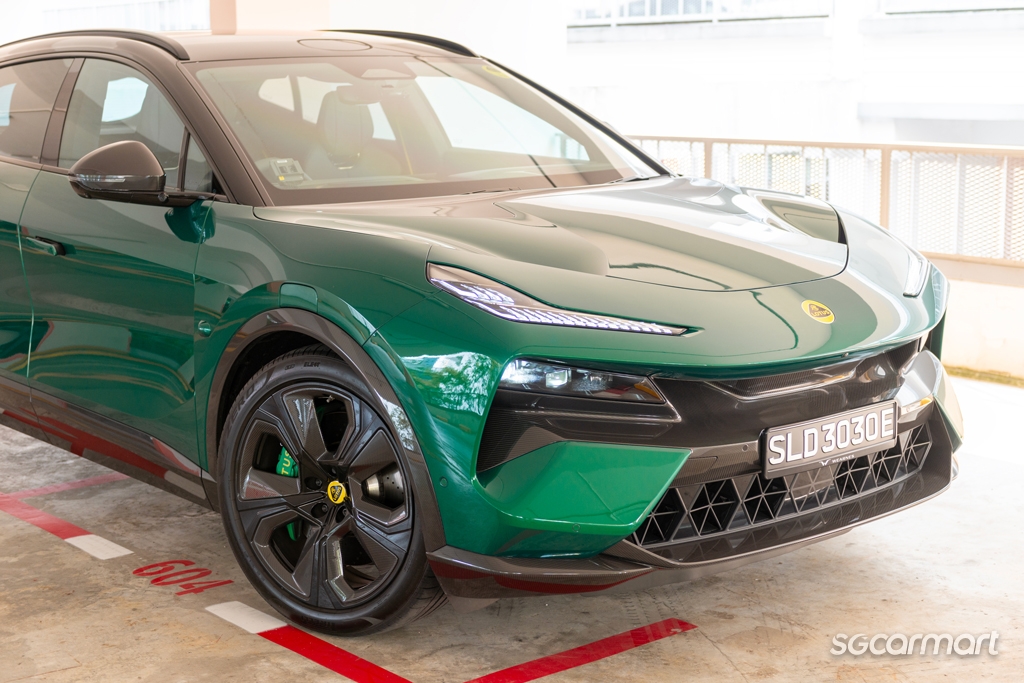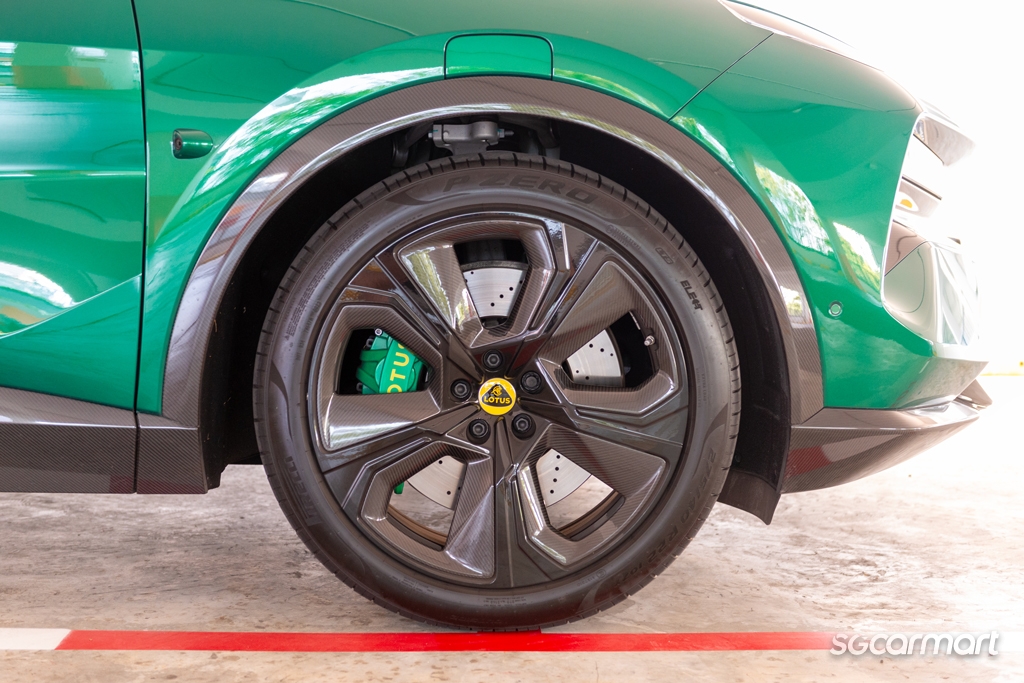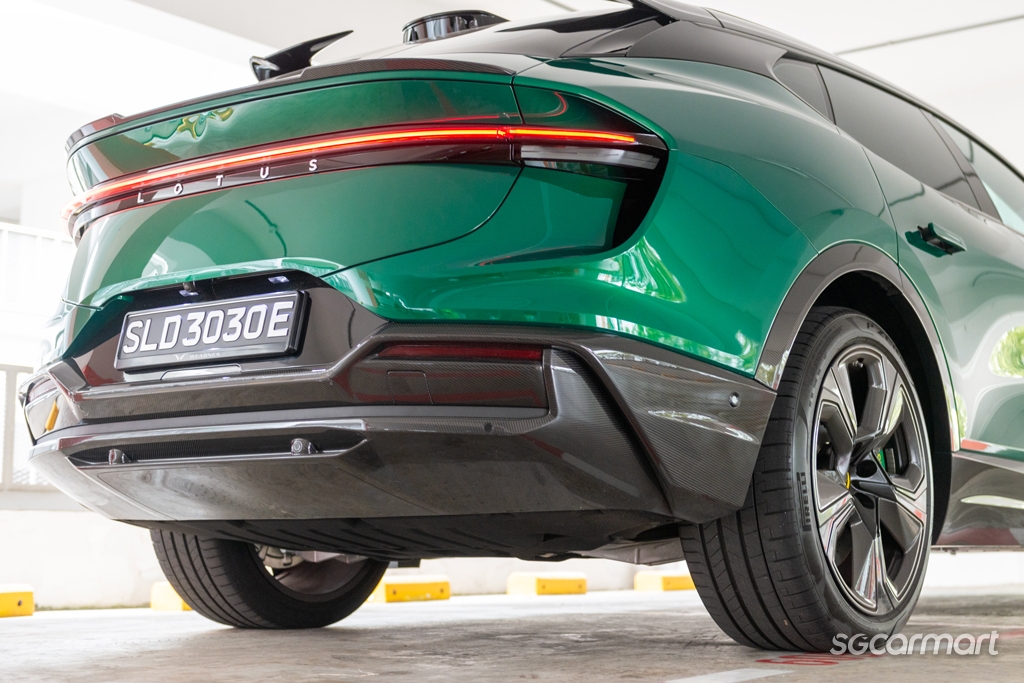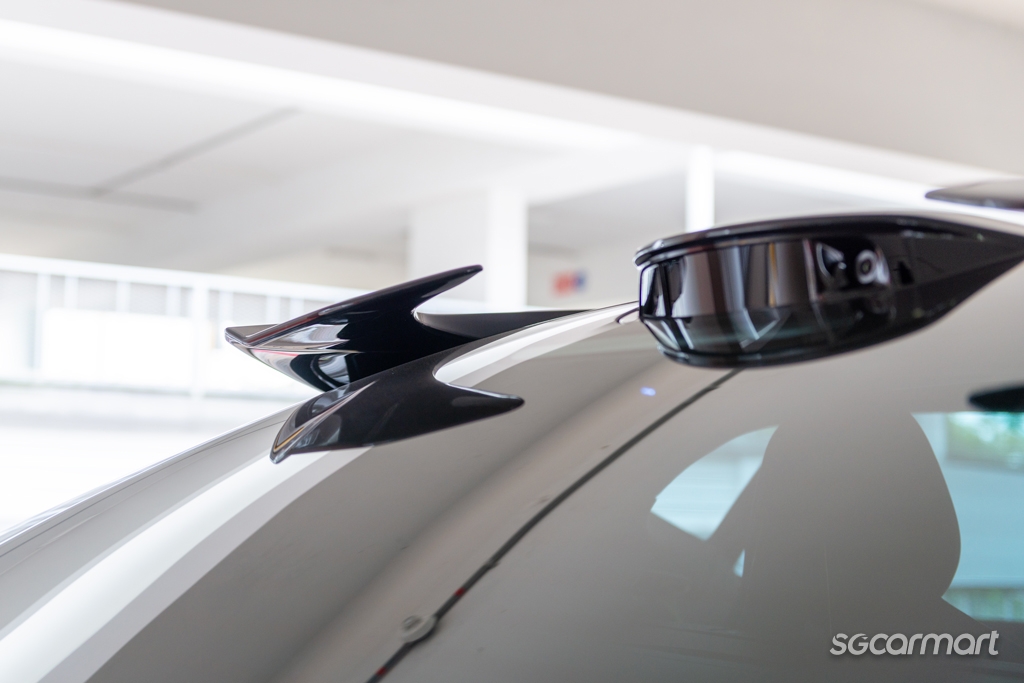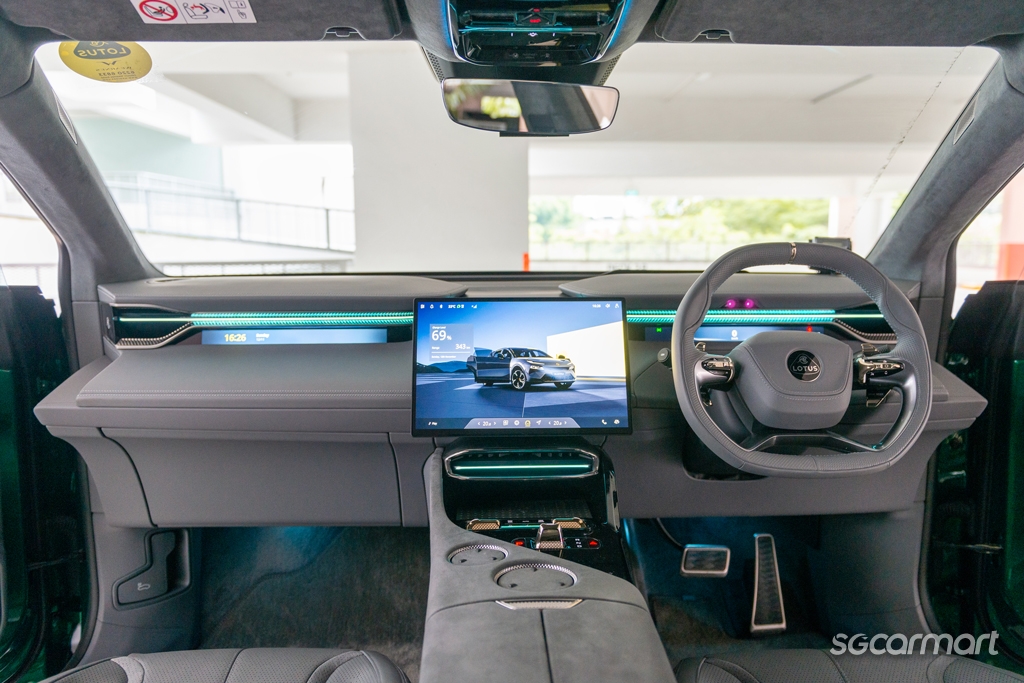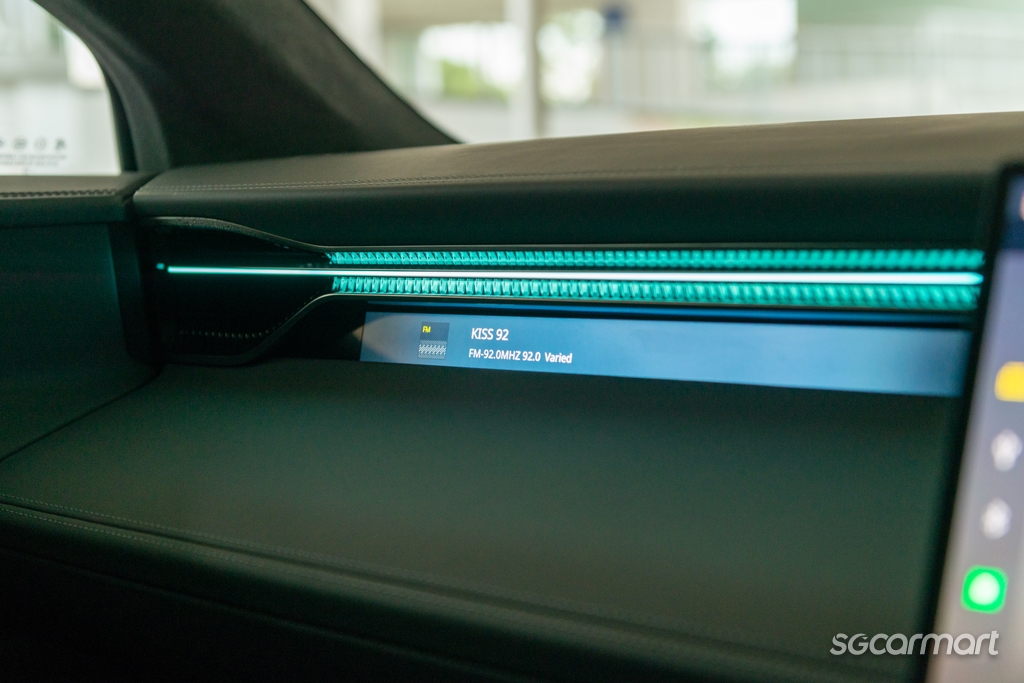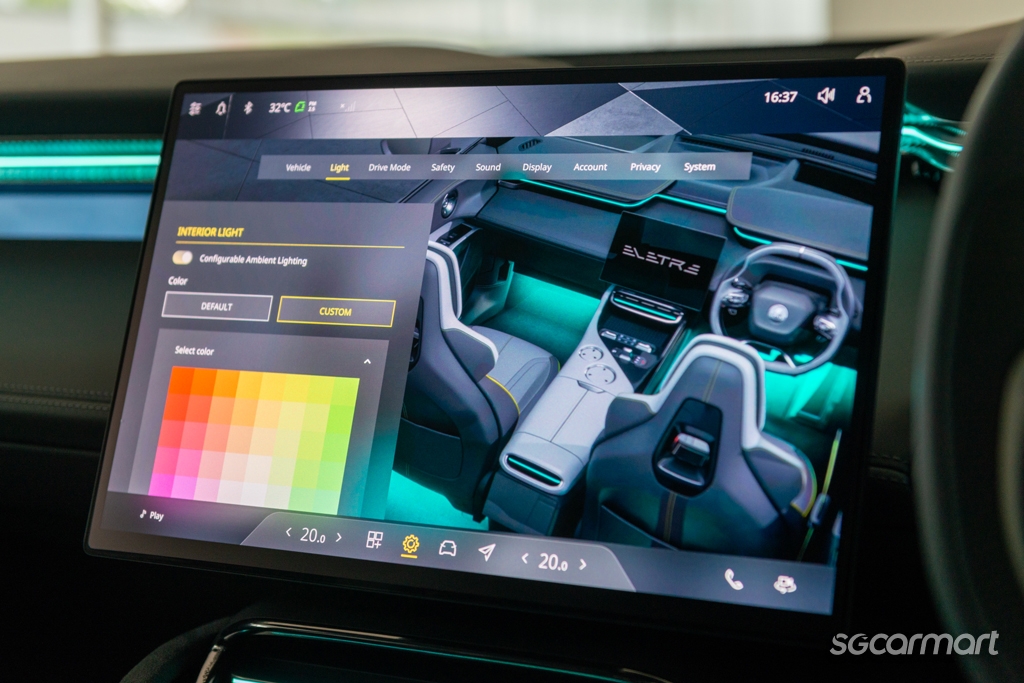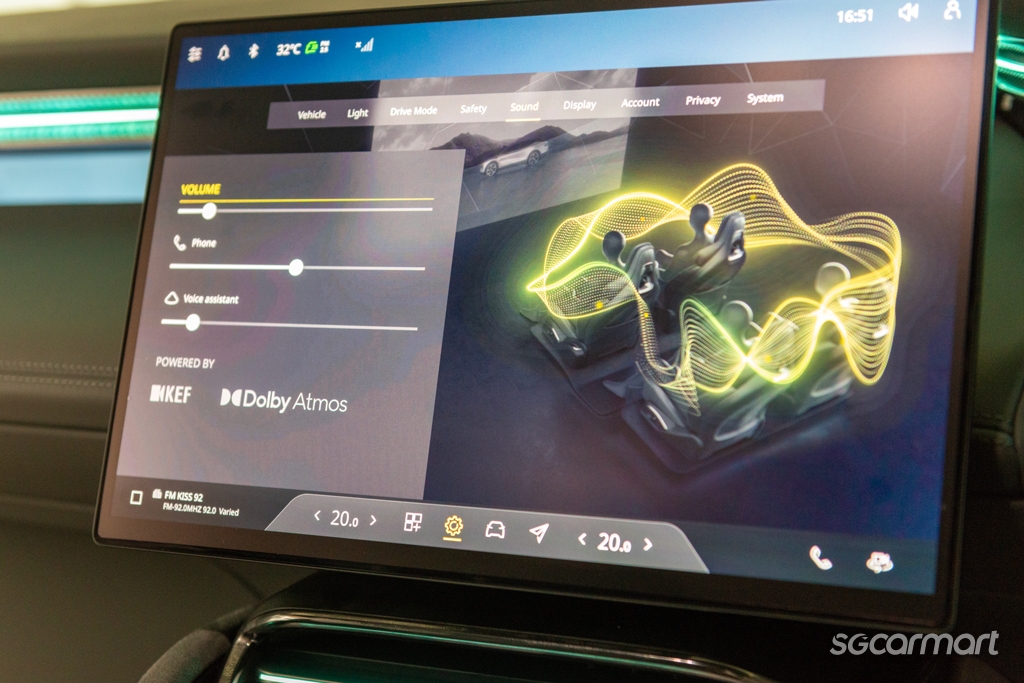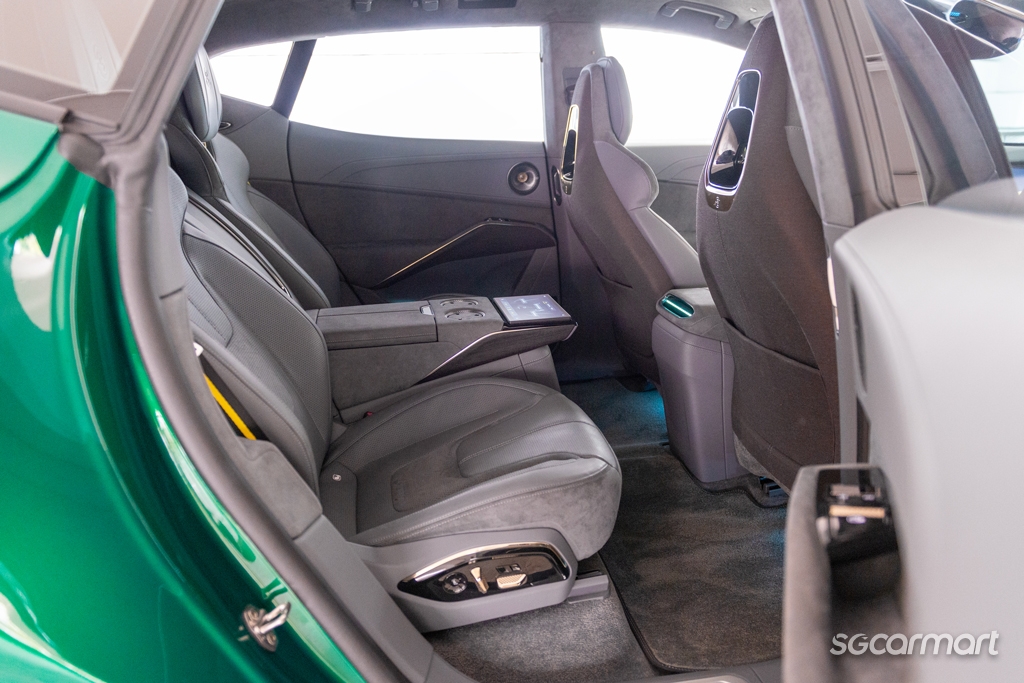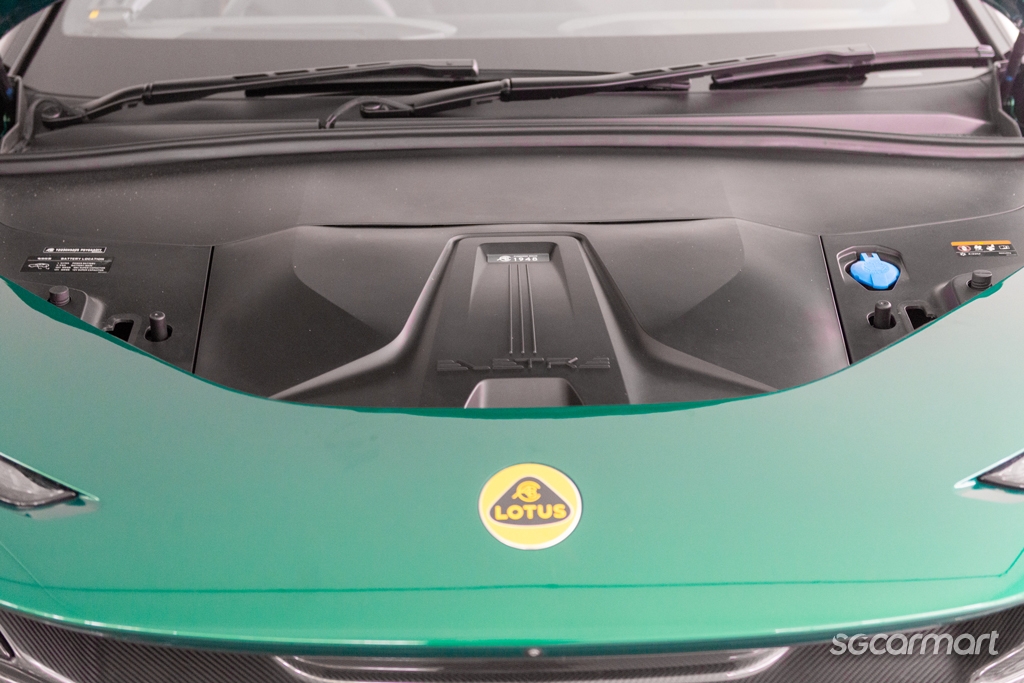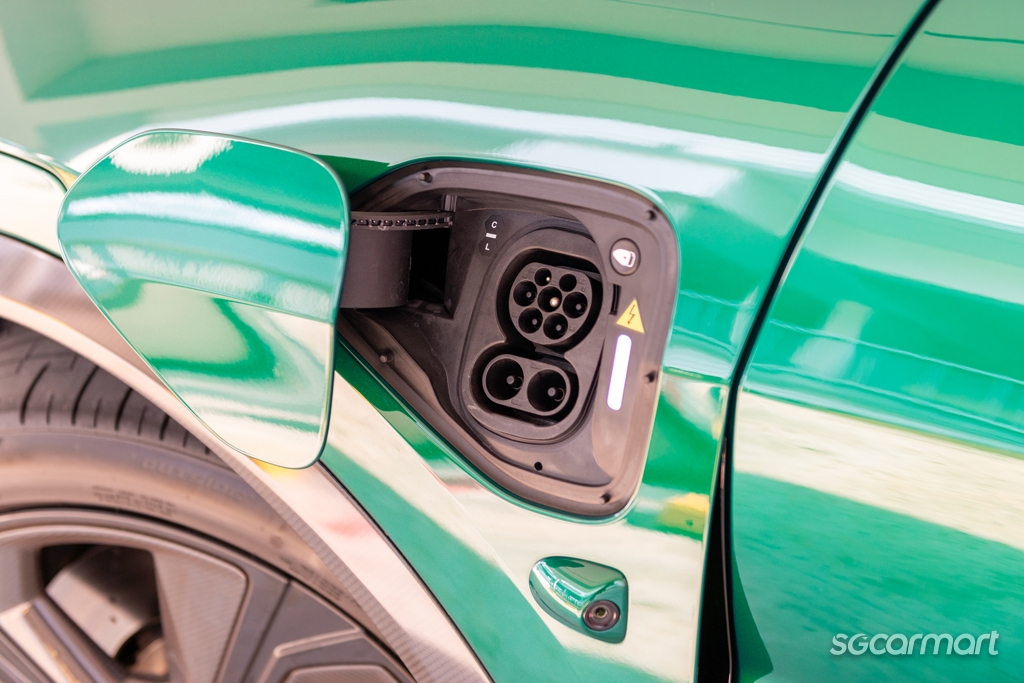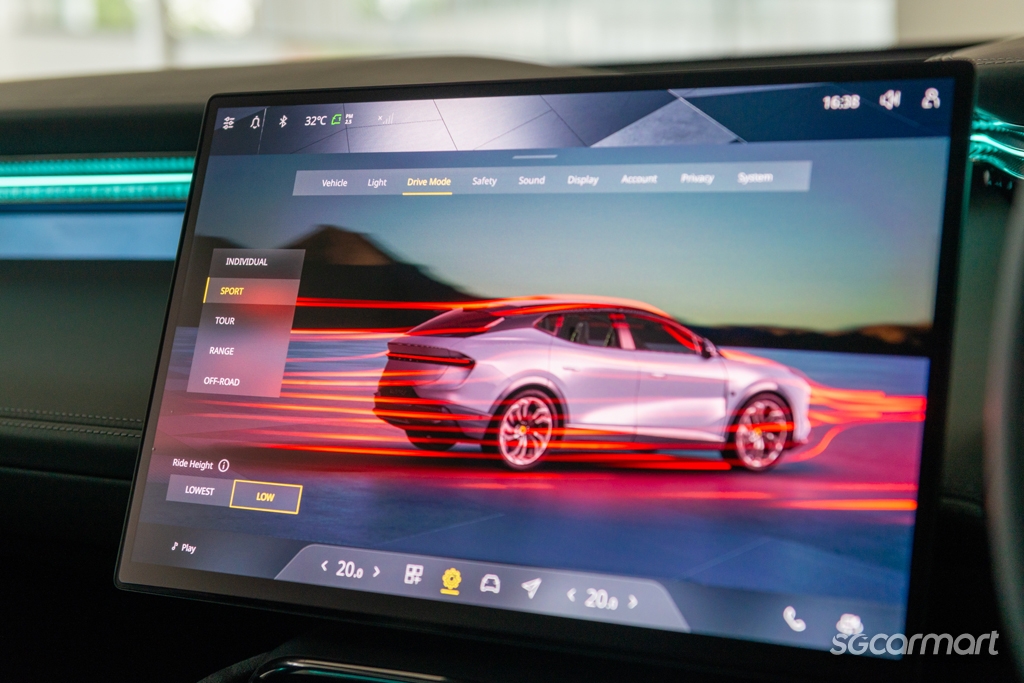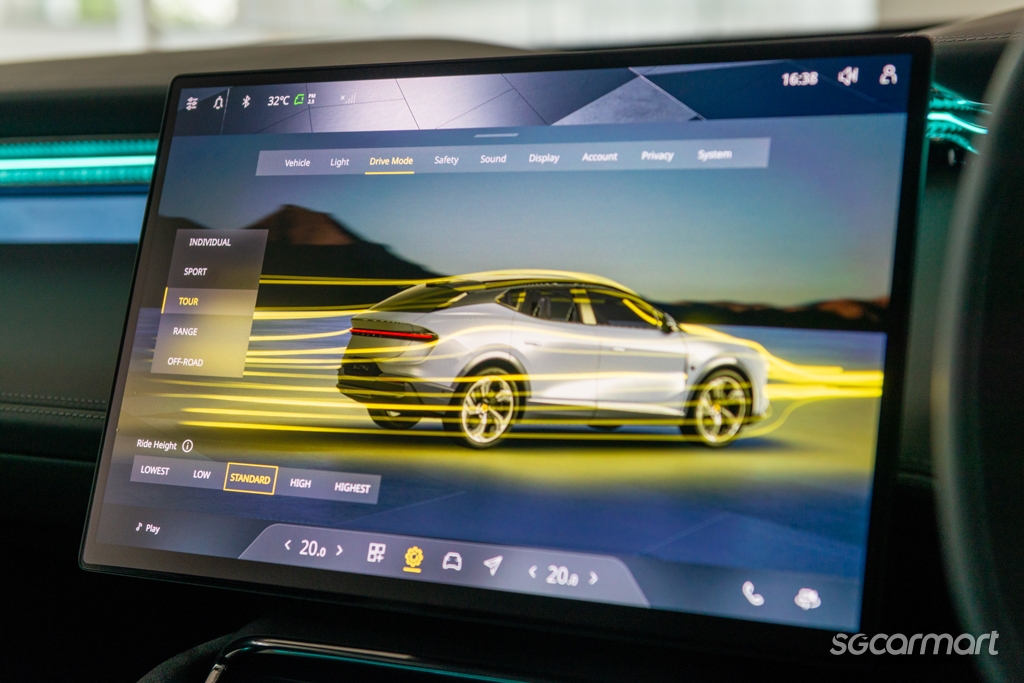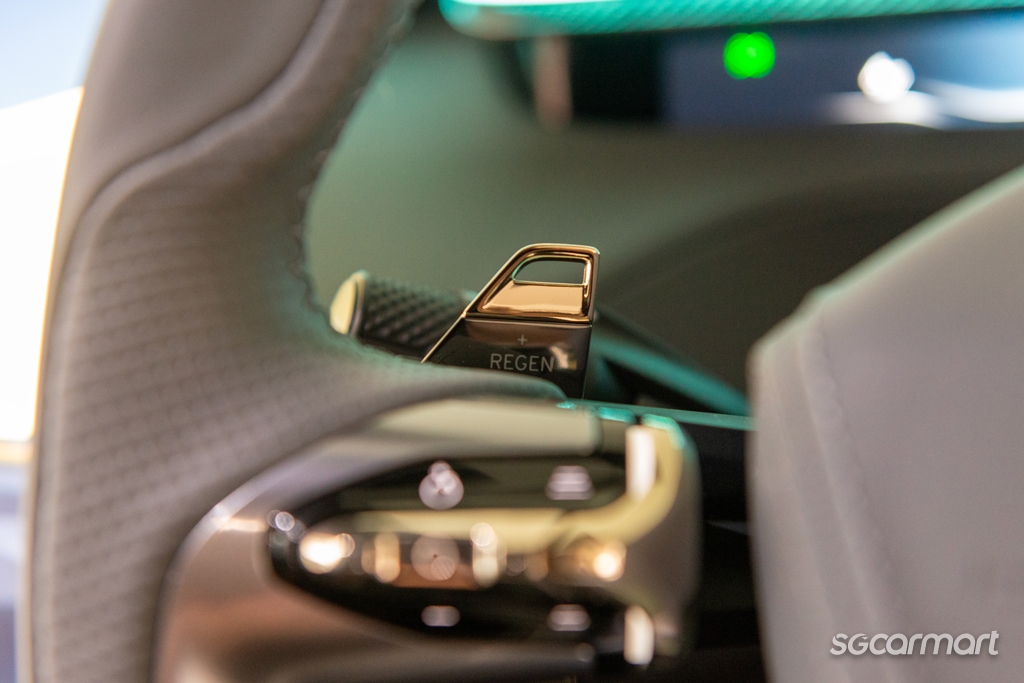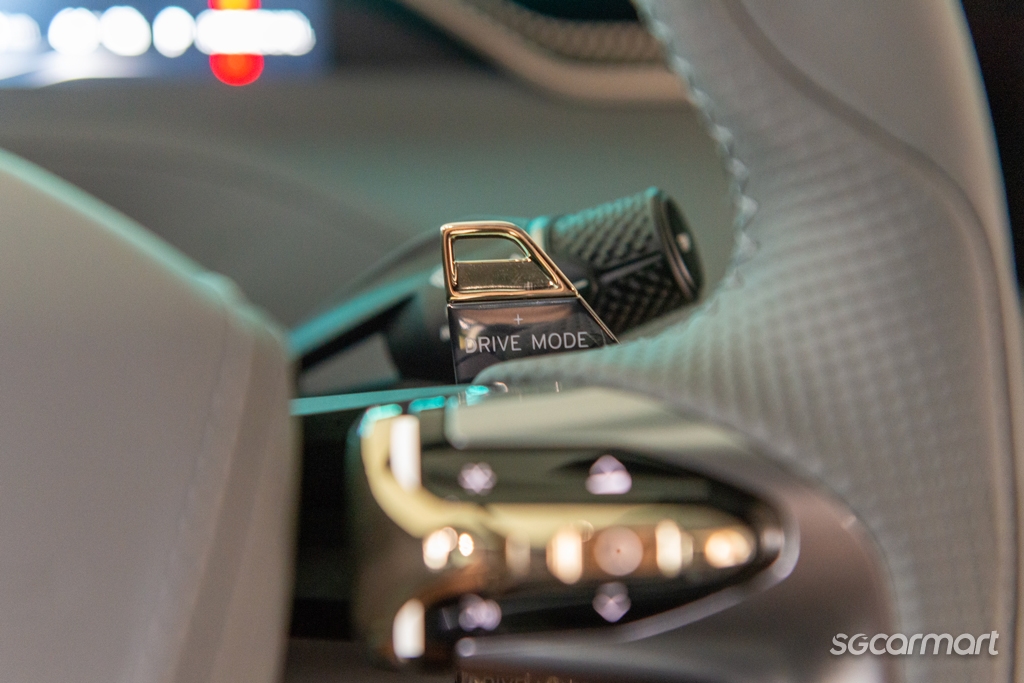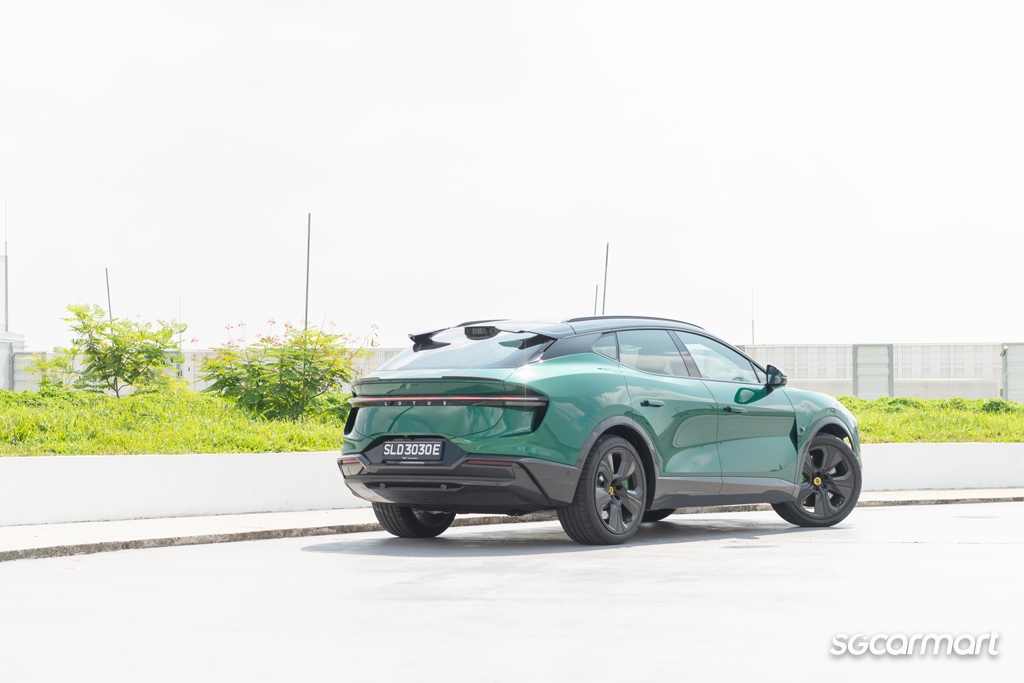Lotus Eletre S Review
21 Nov 2023|10,880 views
What We Like
Pliant, refined ride
Linear power delivery
Luxurious and practical
Relatively easy to drive
It's unlike any Lotus before it
What We Dislike
Feels heavy on the go
Rear-wheel steering is optional
Appalls Lotus traditionalists
By now, any enthusiast who's seen or heard about the Lotus Eletre has either sworn aloud or shaken their heads in dismay and disbelief. How could Lotus, the brand known for making light, lithe and track-focussed cars such as the Elise and Exige, make a U-turn?
The carmaker has gone in the completely opposite direction with the Eletre. Every word you would use to describe it is an adjective that once upon a time, would never have been used to describe a Lotus.
Indeed, the Eletre goes against every Lotus commandment when it comes to cars, especially its philosophy of improving performance by reducing weight. But by disrupting itself, Lotus might be able to continue making the two-door sports cars we so love.
One might mistake this for a Lamborghini Urus from afar, but the Eletre undoubtedly has presence and isn't afraid to emphasise it
Undeniable presence
The Eletre is sizeable and Lotus has made no attempt to hide this fact. This SUV - I'm still struggling to reconcile the terms 'Lotus' and 'SUV' - stretches 5,103mm from front to rear, has a wheelbase length of 3,019mm, and stands 1,636mm tall.
When parked next to a Lotus Emira, the Eletre is like an elephant beside a cheetah.
The Eletre's road presence is further magnified by its aggressive design, with the daytime running lights and head lights giving the car a serpent-like expression.
Aerodynamics is key to both range and performance, and the Eletre's body plays host to a variety of intakes, channels and vents. The latter can be spotted on the bonnet, front bumper and front fenders, D-pillars and rear bumper. Nothing is just for show.
The rear end's full-width taillight, roof spoilers and massive fender vents hint at the SUV's performance
The rear end is particularly striking, with its carbon fibre split roof spoiler and LED light strip that spans the width of the tailgate. It can illuminate in four colours, depending on the function (turning, unlocking, battery charge status, and braking) being activated.
Unseen to most, on the other hand, are the various sensors and components needed for the car's Lidar and related systems. Only eagle-eyed observers will be able to spot the camera lenses around the vehicle.
The Eletre looks its sleekest when viewed from its side, for this is where you'll notice the steeply raked windscreen. I also like how the window lines and roof lines converge at the D-pillars, which also help make the SUV seem less bulky.
This is the most high-tech Lotus model to date - even the front passenger gets his or her own display
From analogue to digital
Getting in and out of the Eletre is also easier than expected. The vehicle isn't that tall, and the doors open plenty wide. Miniskirt-clad drivers and passengers are welcome here. You can't say the same when entering or exiting a Lotus Exige.
A two-door Lotus sports car demands that its driver be slim, limber, and a yoga practitioner. Even if you manage to squeeze in after sitting on the wide door sill and tucking in your legs before swivelling your entire body, many have resulted to crawling out just to exit the car. No such issues in the Eletre. It even has door handles that retract in addition to soft-closing doors.
Such refinements are clues to the type of cockpit that the Eletre has. Nothing in here is analogue - from the instrument panel to the infotainment display to the gearshift tab, everything is digital. The car doesn't even have a start button.
Here are two features you never imagined seeing in a Lotus: ambient lighting (left) and Dolby Atmos (right)
It's abundantly clear that apart from being an SUV, the Eletre is also the most upmarket model that Lotus has ever produced. The sports seats are electrically adjustable, the tabs for adjusting the climate are knurled, and ambient lighting with selectable colours is standard.
You want to breathe cleaner air? No worries, there's a negative oxygen ion purifier function. Is the instrument panel too narrow? There's a wide heads-up display to help. You won't find such amenities in an older Lotus sports car.
The Eletre has some Lotus 'spirit', though. For all its advanced tech toys, the interior's layout is neat and intuitive. Getting in and driving off is easy because there's no On/Off button to press. You just get in and drive. Adjusting your seat is easy, too, because the driving position is spot on.
However, if you opt for the Executive 2+2 seat pack as seen in this test unit, you can't accommodate more than two passengers due to the four-seater layout. And while the 688-litre boot capacity is generous, you can't fold down the two backseats either, thus limiting the SUV's practicality. The standard, five-seater configuration, is more useful and flexible.
You can't see the electrical bits in the Eletre, but you can definitely feel its well-controlled energy delivery
Questions of power
At over five metres long and weighing in at 2.5 tonnes, one wonders how the Eletre is going to be 'Lotus-like' in the traditional sense. Thankfully, the Eletre S packs two electric motors. Fed by a 112kWh battery pack, they pump out 603bhp and 710Nm of torque, allowing it to finish the century dash in 4.5 seconds.
What's surprising, though, is that unlike other EVs that try to instantaneously deliver everything in one go, which is akin to suddenly being walloped by a sledgehammer, the Eletre offers linear, controllable aggression. If you want to be catapulted towards the horizon, look elsewhere.
Rather than trying to make your passengers ill, the Eletre propels everyone in an inoffensive manner. So polite is the performance is that you'll always feel like you're driving slowly, only to be gobsmacked to discover you're cruising silently at three-digit speeds.
There's little aural feedback, which is probably so one can enjoy the KEF audio system that comes with Dolby Atmos. If you're an iPhone user, you can use this by playing Spatial Audio tracks on Apple Music.
Several drive modes (Individual, Sport, Tour, Range, and Off-Road) are offered. Frankly, Sport and Tour felt similar, and there was no need to activate Range since the car supposedly covers 600km before needing a recharge. My preference was Individual, where the dampers could be set to their most pliant and the powertrain to its most responsive.
As an SUV/grand tourer, the Eletre feels most at home in these settings. It can be hustled to a certain extent, too. The steering, with 2.5 turns lock-to-lock, makes it feel very manoeuvrable for its size. But let's be honest here: The Eletre was never going to be a corner-carver like an Elise or an Exige.
There are actually four paddles - two to adjust the regenerative braking levels and another two to scroll through the different drive modes
Sure, the steering is quick, and the stoppers give you confidence to brake later, but multiple systems must work double overtime to manage the SUV's mass and dimensions. The Eletre isn't the model for such shenanigans.
Speaking of which, the brakes, while capable, could use more assistance from the electric motors' regenerative function. Pulling the top left paddle increases the regenerative power. But even in its top setting, there's not much.
The Eletre could also use rear-wheel steering, which is optional in the S model, but standard in the R. Having a fast helm is one thing, but a reduced turning circle will help during parking and when making U-turns.
Lotus evolution?
The Eletre is aimed at non-enthusiasts or buyers who would never have considered a Lotus sports car in the past. Where once their only option was a track-focussed, cramped and bare two-seater, there's now a model that can accommodate the family.
It's true that the Eletre is everything that a traditional Lotus sports car isn't. It's big, cushy, relatively practical and seats more than one passenger. It's chock full of luxuries and driver assistance features. It's what the Cayenne is for Porsche and what the Urus is for Lamborghini.
I believe the Eletre is a new direction, not a radical evolution for the brand. One might say it's late to the SUV and lifestyle game that has helped other carmakers increase their earnings. But hey, if disrupting itself boosts profits and enables Lotus to build the sports cars that enthusiasts want, then it's the right move.
Looking for similar stories? These reviews may interest you
500bhp and 770Nm of torque make the Audi SQ8 a force to be reckoned with
What We Like
Pliant, refined ride
Linear power delivery
Luxurious and practical
Relatively easy to drive
It's unlike any Lotus before it
What We Dislike
Feels heavy on the go
Rear-wheel steering is optional
Appalls Lotus traditionalists
By now, any enthusiast who's seen or heard about the Lotus Eletre has either sworn aloud or shaken their heads in dismay and disbelief. How could Lotus, the brand known for making light, lithe and track-focussed cars such as the Elise and Exige, make a U-turn?
The carmaker has gone in the completely opposite direction with the Eletre. Every word you would use to describe it is an adjective that once upon a time, would never have been used to describe a Lotus.
Indeed, the Eletre goes against every Lotus commandment when it comes to cars, especially its philosophy of improving performance by reducing weight. But by disrupting itself, Lotus might be able to continue making the two-door sports cars we so love.
One might mistake this for a Lamborghini Urus from afar, but the Eletre undoubtedly has presence and isn't afraid to emphasise it
Undeniable presence
The Eletre is sizeable and Lotus has made no attempt to hide this fact. This SUV - I'm still struggling to reconcile the terms 'Lotus' and 'SUV' - stretches 5,103mm from front to rear, has a wheelbase length of 3,019mm, and stands 1,636mm tall.
When parked next to a Lotus Emira, the Eletre is like an elephant beside a cheetah.
The Eletre's road presence is further magnified by its aggressive design, with the daytime running lights and head lights giving the car a serpent-like expression.
Aerodynamics is key to both range and performance, and the Eletre's body plays host to a variety of intakes, channels and vents. The latter can be spotted on the bonnet, front bumper and front fenders, D-pillars and rear bumper. Nothing is just for show.
The rear end's full-width taillight, roof spoilers and massive fender vents hint at the SUV's performance
The rear end is particularly striking, with its carbon fibre split roof spoiler and LED light strip that spans the width of the tailgate. It can illuminate in four colours, depending on the function (turning, unlocking, battery charge status, and braking) being activated.
Unseen to most, on the other hand, are the various sensors and components needed for the car's Lidar and related systems. Only eagle-eyed observers will be able to spot the camera lenses around the vehicle.
The Eletre looks its sleekest when viewed from its side, for this is where you'll notice the steeply raked windscreen. I also like how the window lines and roof lines converge at the D-pillars, which also help make the SUV seem less bulky.
This is the most high-tech Lotus model to date - even the front passenger gets his or her own display
From analogue to digital
Getting in and out of the Eletre is also easier than expected. The vehicle isn't that tall, and the doors open plenty wide. Miniskirt-clad drivers and passengers are welcome here. You can't say the same when entering or exiting a Lotus Exige.
A two-door Lotus sports car demands that its driver be slim, limber, and a yoga practitioner. Even if you manage to squeeze in after sitting on the wide door sill and tucking in your legs before swivelling your entire body, many have resulted to crawling out just to exit the car. No such issues in the Eletre. It even has door handles that retract in addition to soft-closing doors.
Such refinements are clues to the type of cockpit that the Eletre has. Nothing in here is analogue - from the instrument panel to the infotainment display to the gearshift tab, everything is digital. The car doesn't even have a start button.
Here are two features you never imagined seeing in a Lotus: ambient lighting (left) and Dolby Atmos (right)
It's abundantly clear that apart from being an SUV, the Eletre is also the most upmarket model that Lotus has ever produced. The sports seats are electrically adjustable, the tabs for adjusting the climate are knurled, and ambient lighting with selectable colours is standard.
You want to breathe cleaner air? No worries, there's a negative oxygen ion purifier function. Is the instrument panel too narrow? There's a wide heads-up display to help. You won't find such amenities in an older Lotus sports car.
The Eletre has some Lotus 'spirit', though. For all its advanced tech toys, the interior's layout is neat and intuitive. Getting in and driving off is easy because there's no On/Off button to press. You just get in and drive. Adjusting your seat is easy, too, because the driving position is spot on.
However, if you opt for the Executive 2+2 seat pack as seen in this test unit, you can't accommodate more than two passengers due to the four-seater layout. And while the 688-litre boot capacity is generous, you can't fold down the two backseats either, thus limiting the SUV's practicality. The standard, five-seater configuration, is more useful and flexible.
You can't see the electrical bits in the Eletre, but you can definitely feel its well-controlled energy delivery
Questions of power
At over five metres long and weighing in at 2.5 tonnes, one wonders how the Eletre is going to be 'Lotus-like' in the traditional sense. Thankfully, the Eletre S packs two electric motors. Fed by a 112kWh battery pack, they pump out 603bhp and 710Nm of torque, allowing it to finish the century dash in 4.5 seconds.
What's surprising, though, is that unlike other EVs that try to instantaneously deliver everything in one go, which is akin to suddenly being walloped by a sledgehammer, the Eletre offers linear, controllable aggression. If you want to be catapulted towards the horizon, look elsewhere.
Rather than trying to make your passengers ill, the Eletre propels everyone in an inoffensive manner. So polite is the performance is that you'll always feel like you're driving slowly, only to be gobsmacked to discover you're cruising silently at three-digit speeds.
There's little aural feedback, which is probably so one can enjoy the KEF audio system that comes with Dolby Atmos. If you're an iPhone user, you can use this by playing Spatial Audio tracks on Apple Music.
Several drive modes (Individual, Sport, Tour, Range, and Off-Road) are offered. Frankly, Sport and Tour felt similar, and there was no need to activate Range since the car supposedly covers 600km before needing a recharge. My preference was Individual, where the dampers could be set to their most pliant and the powertrain to its most responsive.
As an SUV/grand tourer, the Eletre feels most at home in these settings. It can be hustled to a certain extent, too. The steering, with 2.5 turns lock-to-lock, makes it feel very manoeuvrable for its size. But let's be honest here: The Eletre was never going to be a corner-carver like an Elise or an Exige.
There are actually four paddles - two to adjust the regenerative braking levels and another two to scroll through the different drive modes
Sure, the steering is quick, and the stoppers give you confidence to brake later, but multiple systems must work double overtime to manage the SUV's mass and dimensions. The Eletre isn't the model for such shenanigans.
Speaking of which, the brakes, while capable, could use more assistance from the electric motors' regenerative function. Pulling the top left paddle increases the regenerative power. But even in its top setting, there's not much.
The Eletre could also use rear-wheel steering, which is optional in the S model, but standard in the R. Having a fast helm is one thing, but a reduced turning circle will help during parking and when making U-turns.
Lotus evolution?
The Eletre is aimed at non-enthusiasts or buyers who would never have considered a Lotus sports car in the past. Where once their only option was a track-focussed, cramped and bare two-seater, there's now a model that can accommodate the family.
It's true that the Eletre is everything that a traditional Lotus sports car isn't. It's big, cushy, relatively practical and seats more than one passenger. It's chock full of luxuries and driver assistance features. It's what the Cayenne is for Porsche and what the Urus is for Lamborghini.
I believe the Eletre is a new direction, not a radical evolution for the brand. One might say it's late to the SUV and lifestyle game that has helped other carmakers increase their earnings. But hey, if disrupting itself boosts profits and enables Lotus to build the sports cars that enthusiasts want, then it's the right move.
Looking for similar stories? These reviews may interest you
500bhp and 770Nm of torque make the Audi SQ8 a force to be reckoned with
Also read our comparison article on:
Audi SQ8 Sportback e-tron vs Lotus Eletre SCar Information
Lotus Eletre
CAT B|Electric|4.7km/kWh
Horsepower
450kW (603 bhp)
Torque
710 Nm
Acceleration
4.5sec (0-100km /hr)
Thank You For Your Subscription.
- Undeniable Presence
- From Analogue To Digital
- Questions Of Power
- New Direction































































